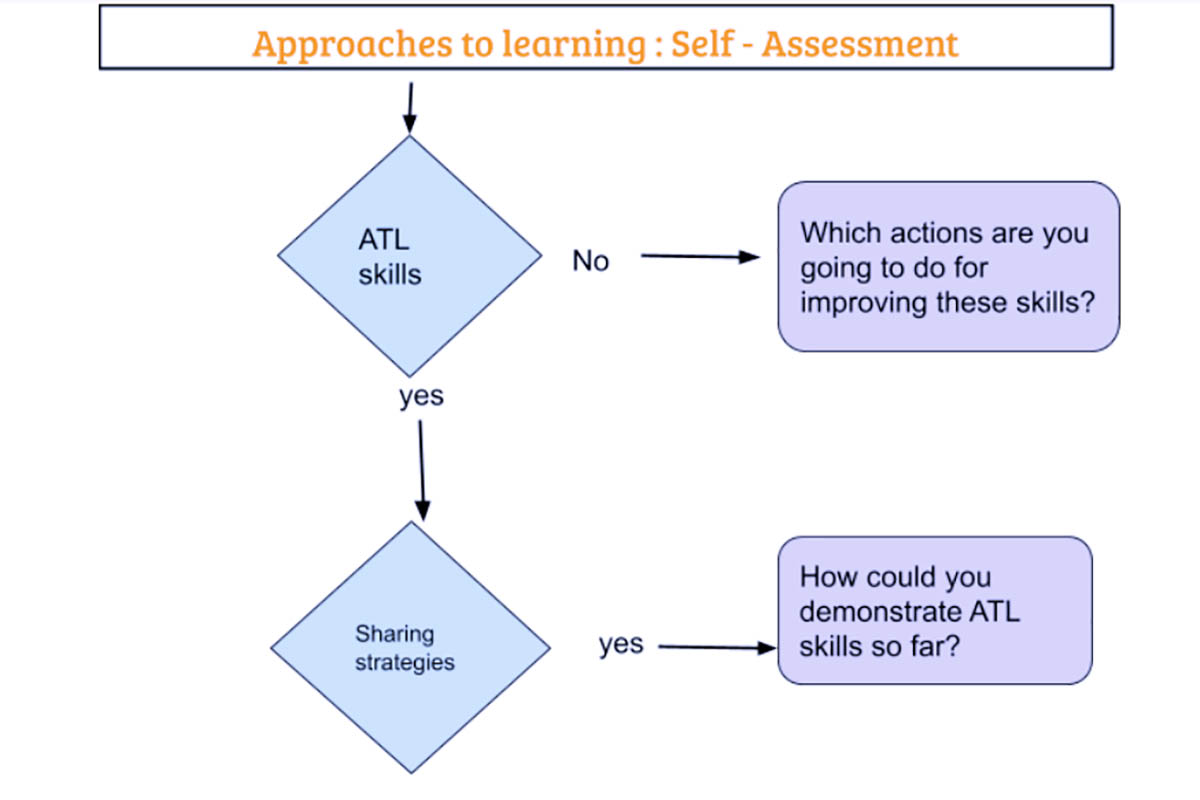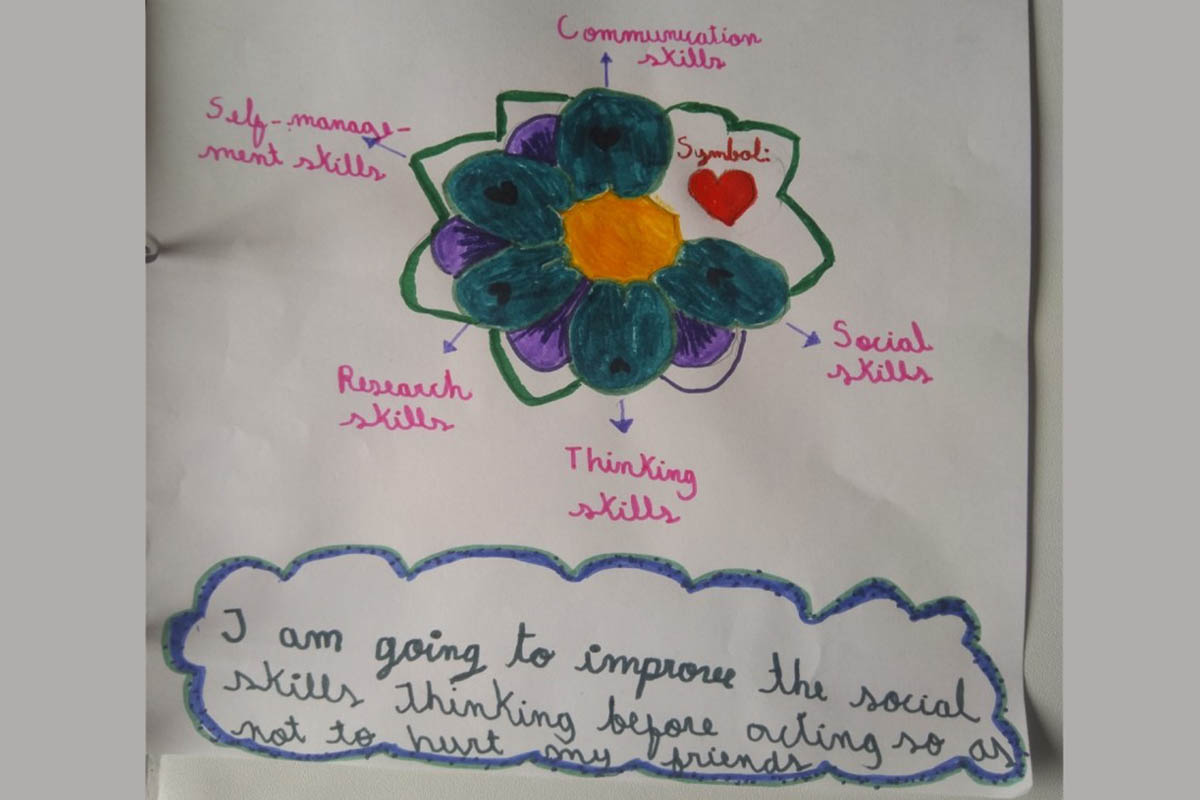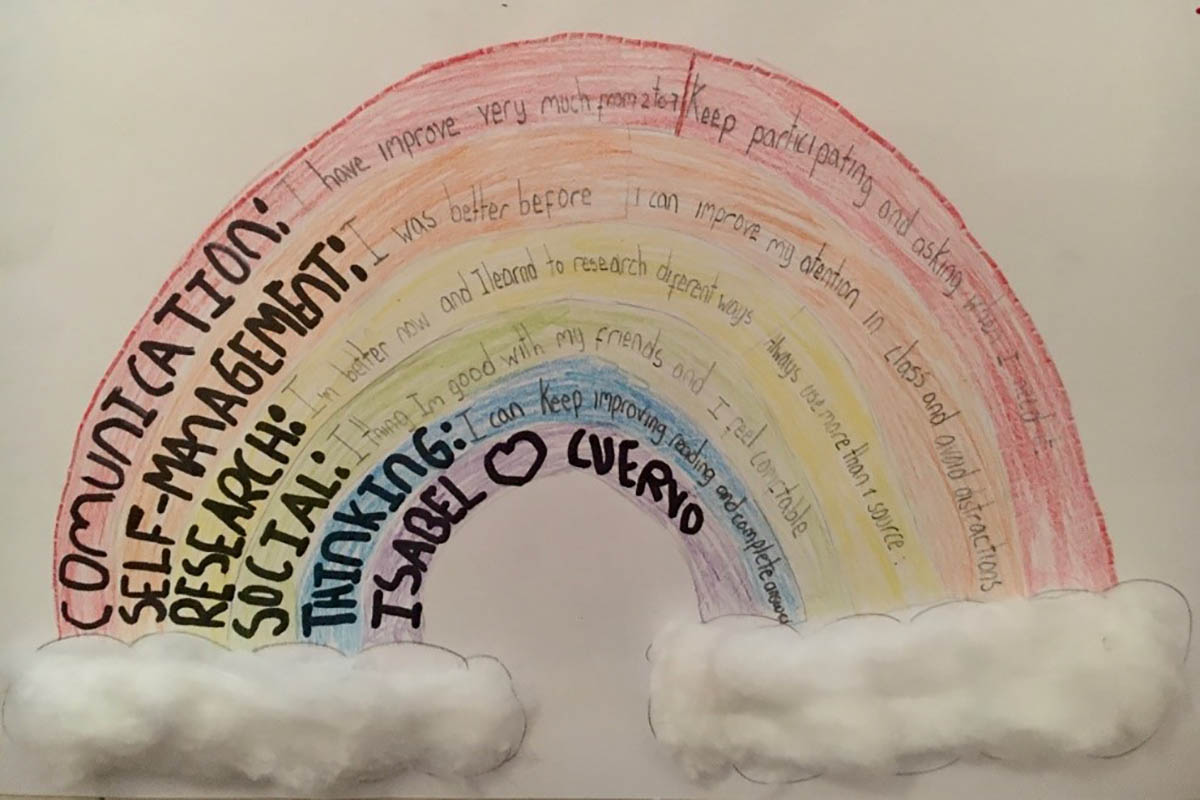Primary Years Programme (PYP) teacher Johana Barón explains how she helps her students assess their approaches to learning (ATL) skills and why it’s vital for their own learning.
In some cultures around the world, the lotus flower is seen as a symbol of rebirth; allowing one to take on a new set of challenges. This flower represents the model I use to help my students understand self-assessment as it allows me to add different symbols to each petal. It represents self-regeneration even during adverse conditions but their buds represent beauty. The color of their petals are sparkling and it blooms in different environments. Each petal has six icons that show the path to reach the image’s top in the unit of inquiry. Every student will be assigned a place according to their skills and will have the opportunity to develop them throughout the unit.

Figure 1: Lotus flower illustrating the different skills used for self-assessment.
The reason why I compare the lotus flower to my students is because they both create a magical universe around us. Students can demonstrate their skills in the curriculum and are encouraged to improve every single day. As teachers, we have to foster them so that our students can recognize their own learning and assess if they have reached their goals. This process allows them to discover their strengths and weaknesses which is essential as they move on to the next step.
They recognize the areas that they would like to work on but also realize that they are bright in different contexts and have the power to be better human beings. Here is a resource that you can use to help your students understand self-assessment in the approaches to learning (ATL).
Self-assessment using a flowchart
This flowchart allows students to understand the process of assessing ATL skills. It helps them organize and structure their insights and they can share the results with the whole class to overcome obstacles. The flowchart fosters the curiosity and interest of students by inspiring them to be better in each ATL skill. The role of the teacher is to encourage students to provide feedback to their classmates when they are working as a team. It’s an opportunity for them to help each other by giving advice and providing useful examples to change some habits or routines in their daily life.

I have spent time creating new ways to assess ATL skills, especially for primary students, and it’s inspiring to see them apply it in different settings. It’s amazing to see my students engage in various learning experiences and I would like to show you how my third-grade students were working with this model.
First, I explained the intention of this experience, the reason why self-assessment is vital when reflecting on your own learning and the importance of being honest in the development of the process. Then, my students implemented this strategy in their work and some of them decided to use the same lotus flower and others created another image to represent their ATL skills. To select the icons in each petal, the teacher should ask students to reflect on the following queries:
- Which ATL skills have you enhanced throughout the unit of inquiry?
- Which skills have you struggled with and why?
- Which skill are you going to improve for the next unit of inquiry?
- How can you improve these skills?
Finally, I added five concrete action points to work on for the next unit of inquiry with the entire class. My students showed a lot of enthusiasm when asked to illustrate their skills and you can have a look at an example down below:

Lessons learned
This challenge demonstrated their agency in developing a creative task and growth mindset, giving all the students the chance to analyze their process of learning taking into the account their own skills. They showed an active role in the development of this learning experience by thinking about the best image to represent their ATL skills. At the same time, each student had the opportunity to present their reflection to their classmates.
They were capable of explaining what they had learned throughout the unit of inquiry because they loved making decisions by themselves. They took responsibility for their own learning and at the same time, they reflected on their strengths and weaknesses. At the end of this process, they were able to use the flowchart above. They joined as a cooperative group to help each other with their reflections as well as sharing the strategies used to overcome obstacles.

I believe it is essential to create an environment in which our students show their initiative as it’s is an opportunity to build progress on their ATL skills. This learning experience was an effective way to foster our students to be knowledgeable about their own performance with our support as well as making connections between each ATL and how it can enhance their life.

Deysi Johana Barón Gutiérrez, from Colombia, has over 20 years of experience in teaching. She holds a Master’s Degree in Education from Pedagogica University and has worked as a Primary Years Programme (PYP) teacher in Gimnasio Los Portales School in Bogotá, Colombia for the last four years. She is proficient in planning and developing strategies to support the learning process. She has published three articles: two for the Sharing PYP blog “Solving conflicts together” and “skills and disposition in online learning” and one for the IB Community Blog “Using ATL skills to provide effective feedback”. Finally, she believes in the importance of hearing students’ voices for establishing an environment of trust and safety. You can connect with her here.
If you are an IB World School or an IB student and you wish to share your story with us, please write to us at communications@ibo.org. We appreciate your ongoing support and invite you to connect with us on Twitter, LinkedIn, Instagram and now YouTube!
If you enjoyed this story, consider reading more below:



